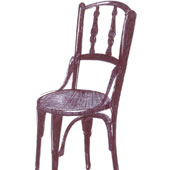Irani and Parsi cafes are seen chiefly in the southern parts of Mumbai. However, such cafes are also found in Pune and Hyderabad. But these cafes from Mumbai are fading out very rapidly. Known mostly at one point of time for the famous Irani chai and brun maska, these cafes or restaurants also offered Irani dishes like dhansak, Sali boti, custards amongst others. Started in the British era, serving continental food, these restaurants changed their platter post Indian independence and switched over to offer Irani food and Mughlai food, besides the regular offering of bakery items like cakes, patties, buns, etc.
Though Iranis and Parsis, in India are entirely different communities or groups, both of them are Zorastrians. Thus a lot of cultural similarities is rendered into the restaurants they run and the food they offer.
In an article in the Indian Express on “Irani cafés: Inheritance of loss”, Naomi Lobo has traced the background of these cafés: When the Zoroastrian Iranians came to India in the 19th century, they had no riches and were in search of a better livelihood. Mumbai (Bombay), at that time, was already home to another Zoroastrian community, the Parsis. A couple of Iranians worked in Parsi homes as caretakers and met in the evenings to discuss the life they had left behind, and their future prospects. One evening, a man served tea to everyone and charged them a small amount. The result: A business was born, of serving tea. And this was the beginning of an Irani café. Irani Cafes flourished in Mumbai followed by Pune and Hyderabad. Pune had its fair share of these cafes, which are today reduced to just a handful.
Also, another story says that Hindus considered corner shops as inauspicious locations as they were “goumukhi” in shape, that is like a cow’s face. The Parsis saw good business in these locations and thus began all the cafes.
• Who are the Iranis ?
Iranis docked directly at Bombay in a mass migration through the second half of the 1800s. Iranis either go by their generic surname Irani or by the last name based on the towns from which they hailed, such as Kermani, Yezdani, Khosravi, Faroodi and Jafrabadi. Some third-generation Iranis are still fluent in Dari, the dialect sans script that their forefathers adopted so that their rulers could not tell what they were saying.
• Who are the Parsis ?
Parsis set sail from their home turf of Pars to alight on Gujarat's shores before moving, over time to the colonial trade and business hub of Bombay. Parsis adopted new names in India, usually based on the Gujarati word for their occupation – Vakil (lawyer), Mistry (carpenter), etc. Gujarati is the Parsis’ acknowledged mother tongue.

Parsi residents enclave at South Mumbai
Courtesy : Author

South Mumbai
Courtesy : Author

Zorastrian Symbol

